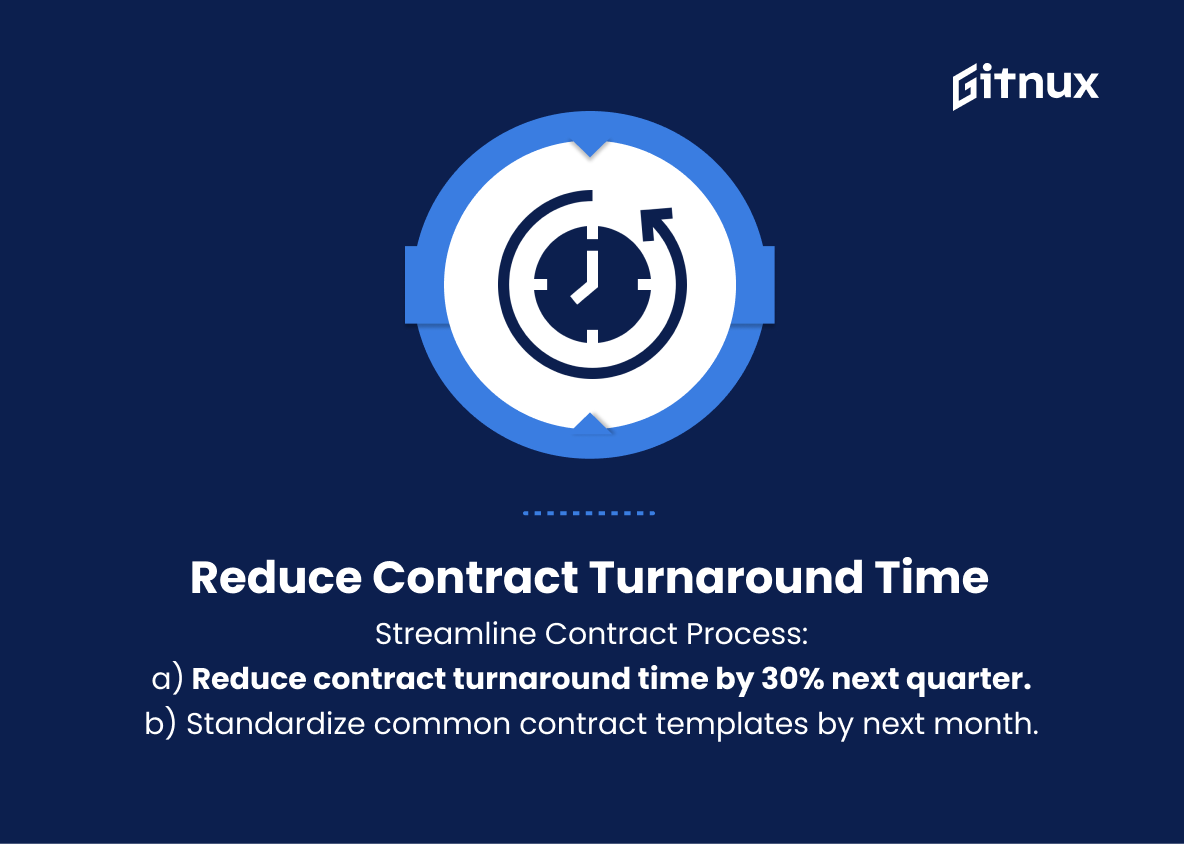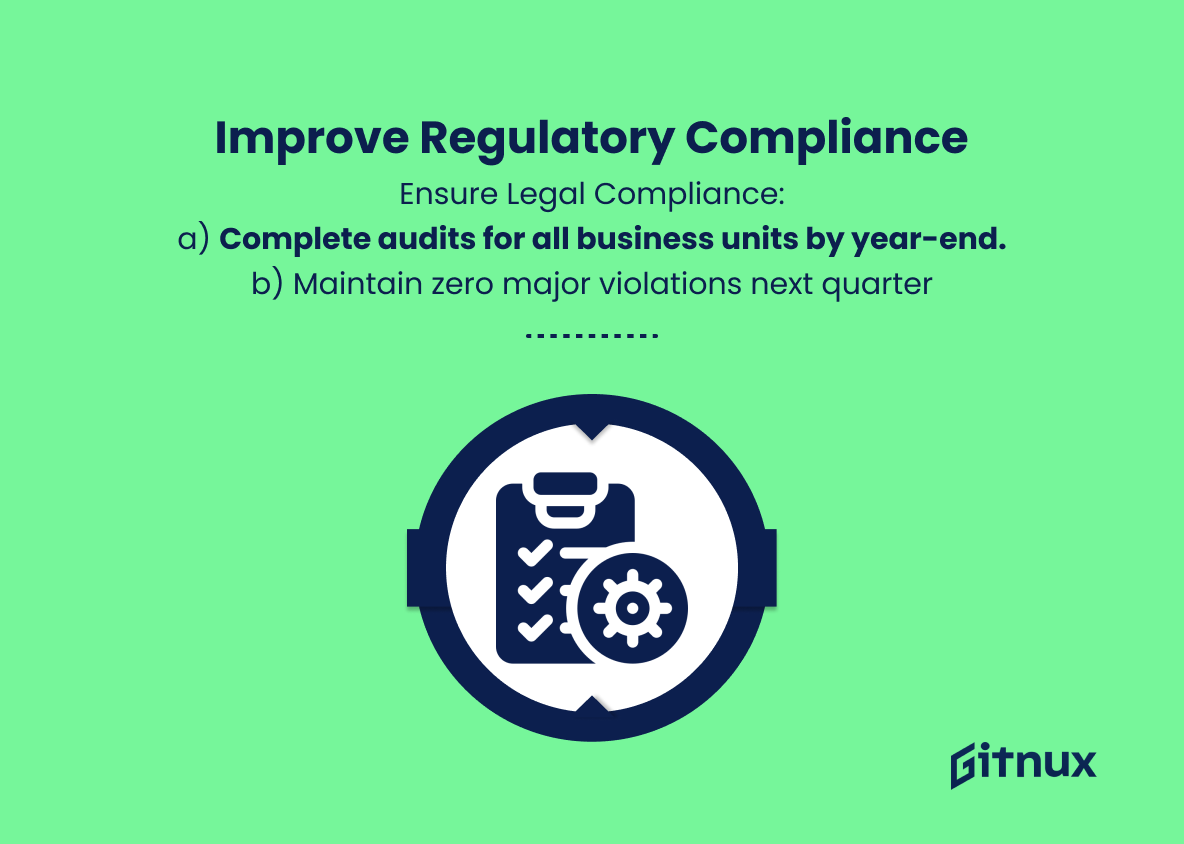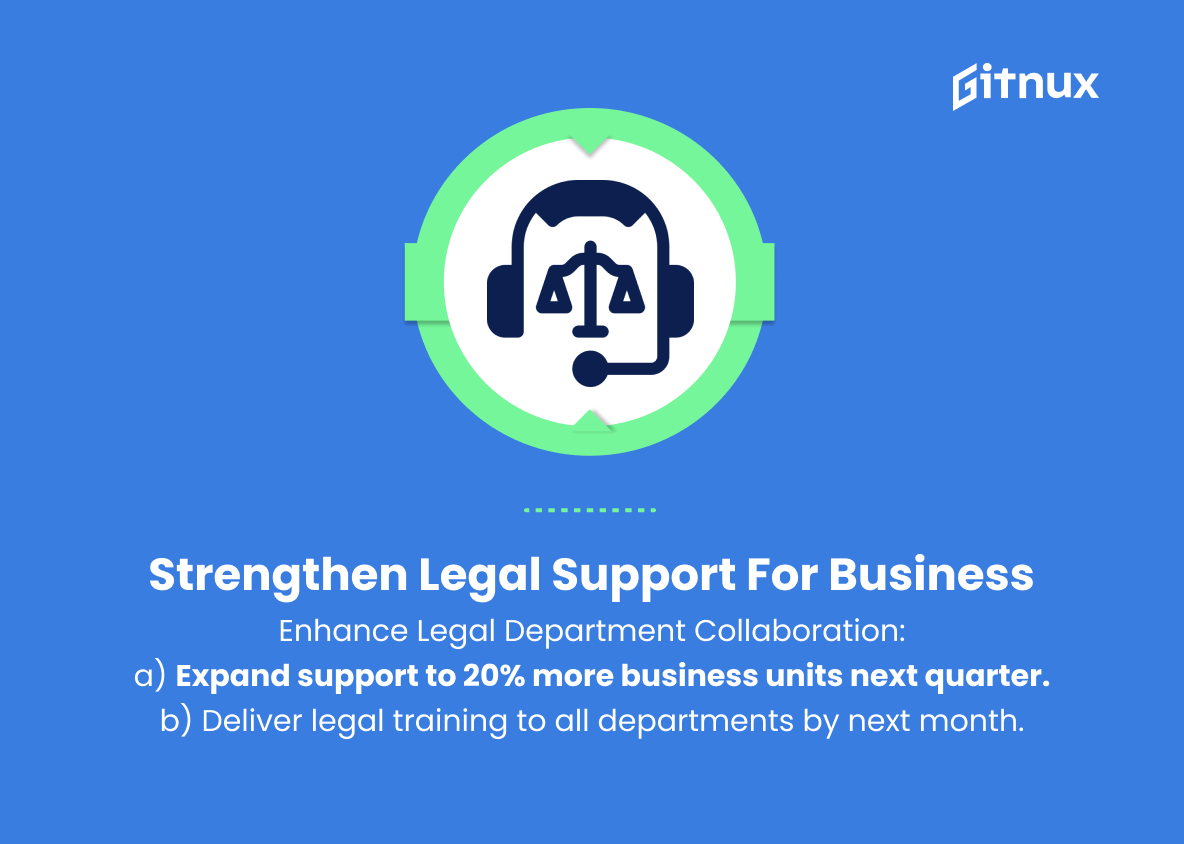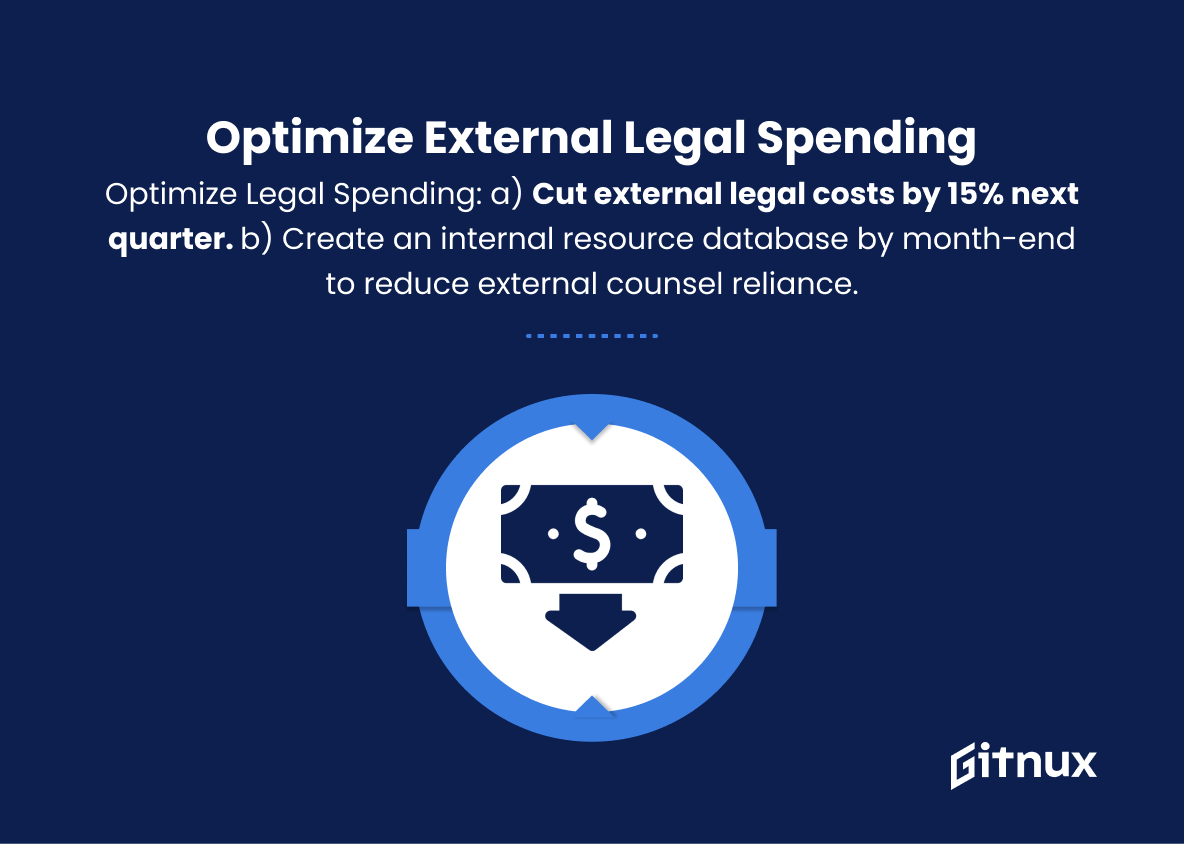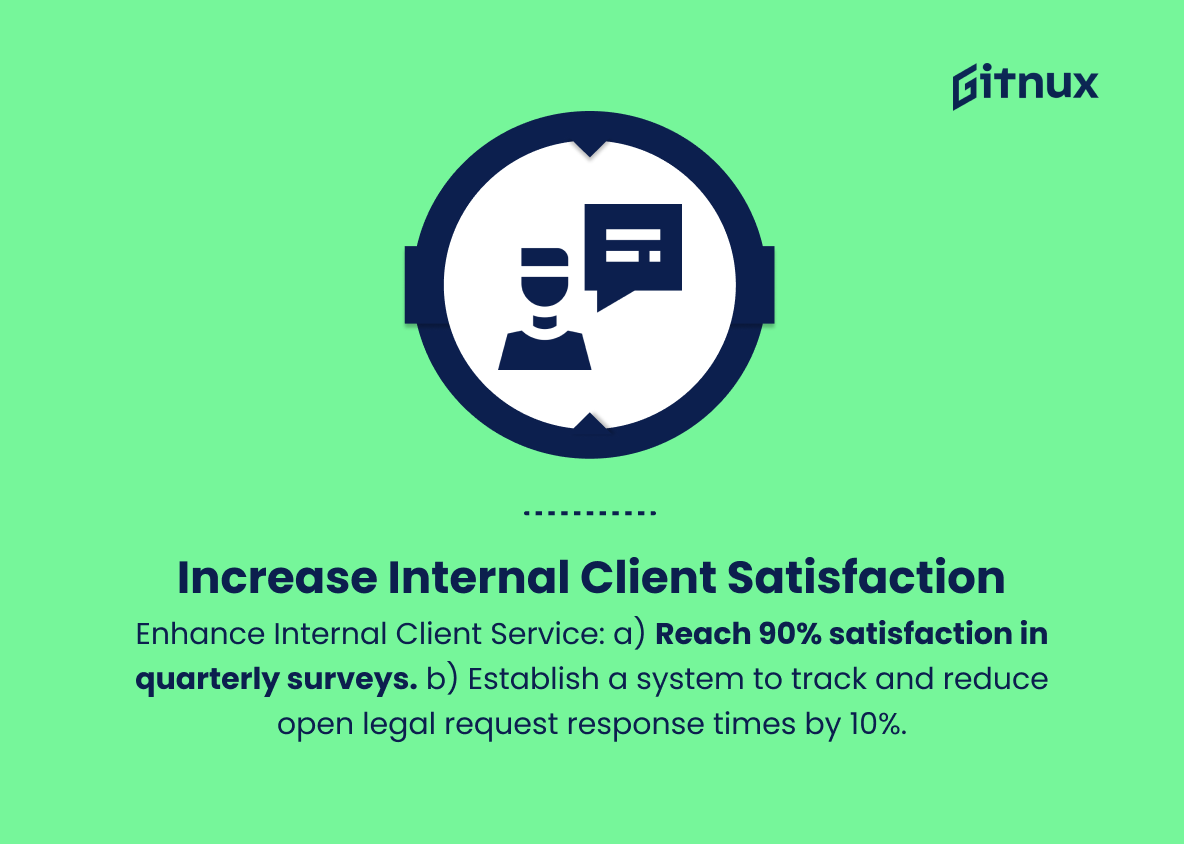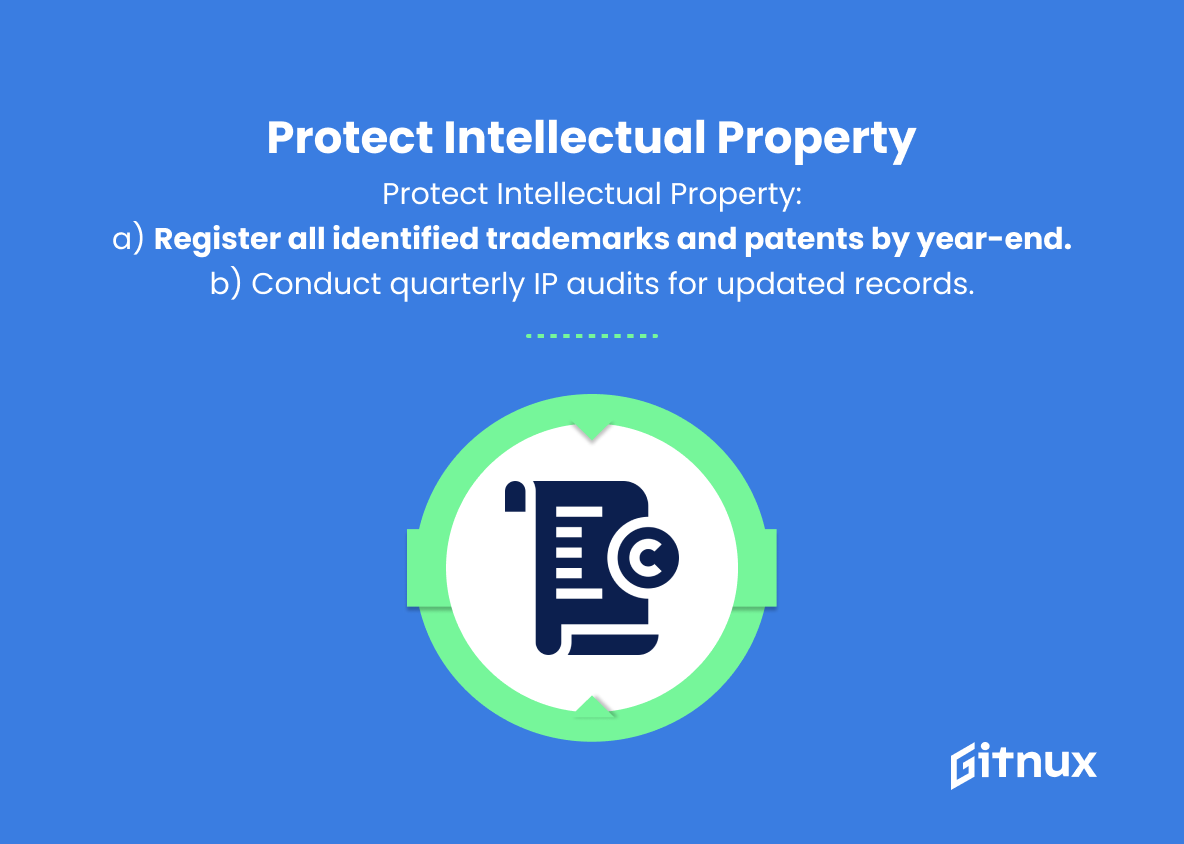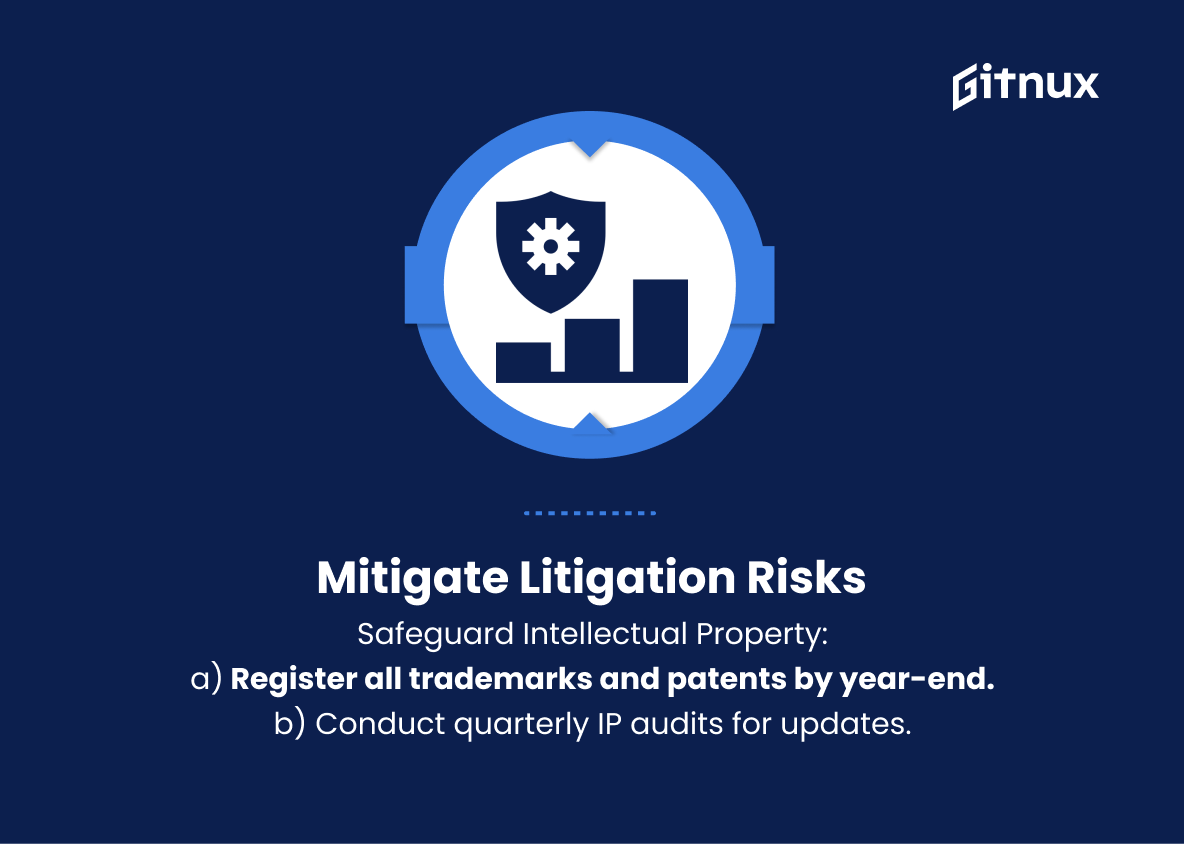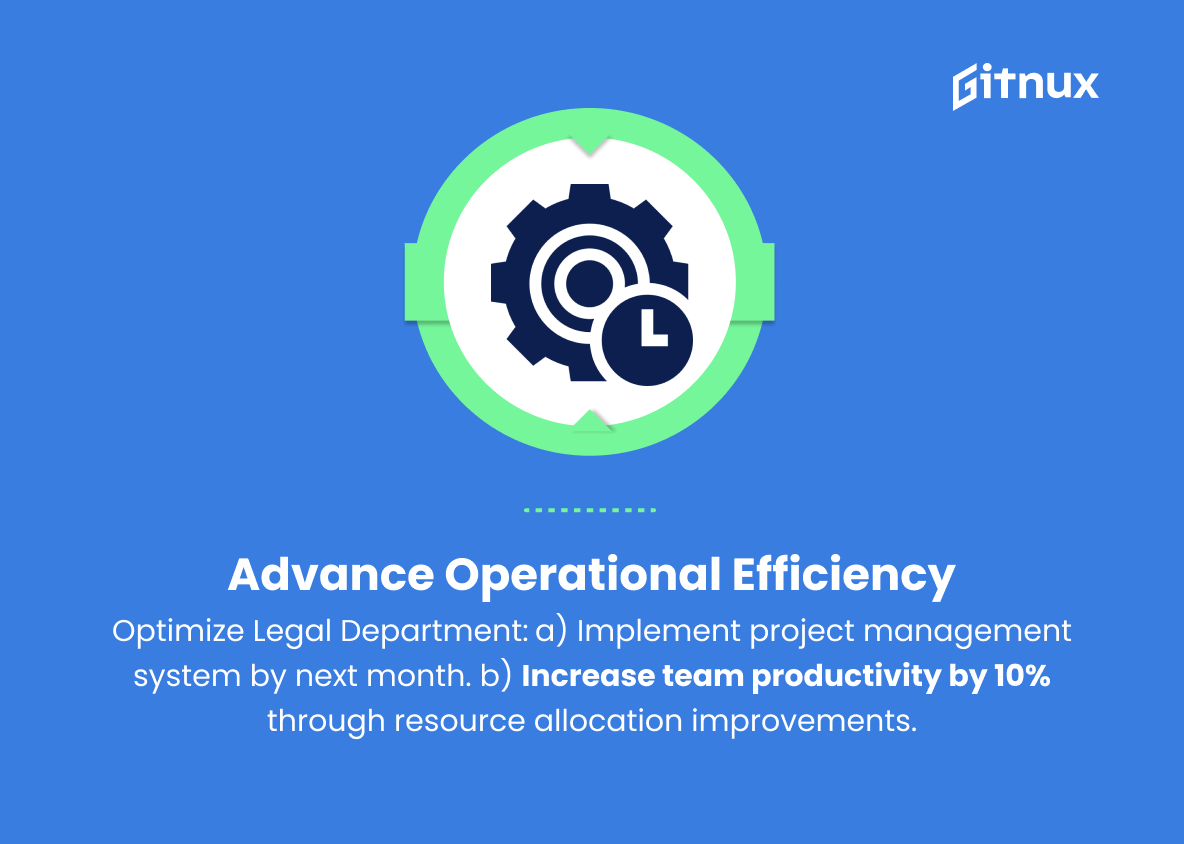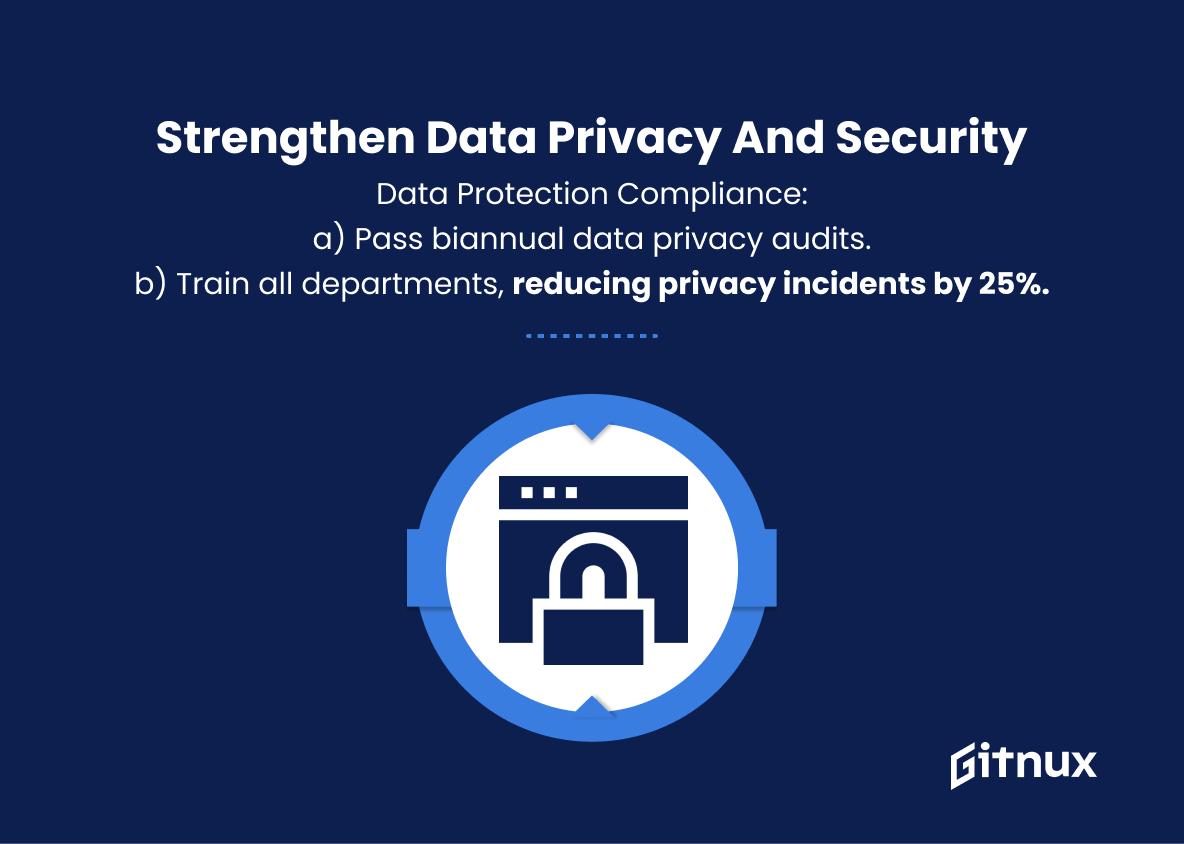Legal teams play a critical role in the success and protection of any organization, ensuring that operations are conducted legally and strategically mitigating risks to drive growth. To continually exceed performance expectations and remain agile within the rapid changes in regulations and compliance, legal teams must establish clear, ambitious, and attainable objectives.
In this blog post, we will discuss the importance of implementing Objectives and Key Results (OKRs) into the framework of your legal team, explore a range of relevant OKRs to consider, and provide insights on how to craft the most effective legal team OKRs for your organization’s unique needs. So, let’s delve into the world of legal objectives and measurable results that will propel your legal team’s performance to new heights.
Legal Team OKRs You Should Know
1. Reduce contract turnaround time
Objective: Streamline the contract review and approval process
Key Results:
a) Decrease average contract turnaround time by 30% in the next quarter
b) Implement standardized contract templates for common use cases by the end of the next month
2. Improve regulatory compliance
Objective: Ensure thorough adherence to all relevant laws and regulations
Key Results:
a) Conduct compliance audits for 100% of business units by the end of the year
b) Achieve zero major compliance violations in the next quarter
3. Enhance legal support for business initiatives
Objective: Become a proactive partner for all departments in shaping business strategy and decisions
Key Results:
a) Increase the number of business units supported by the legal team by 20% in the next quarter
b) Provide legal training sessions to representatives from every department by the close of the next month
4. Optimize external legal spending
Objective: Efficiently manage the use of external legal services and control costs
Key Results:
a) Reduce external legal spending by 15% in the next quarter
b) Develop an internal resource database to reduce reliance on external counsel by the end of the month
5. Increase internal client satisfaction
Objective: Improve responsiveness and effectiveness in addressing the needs of internal clients
Key Results:
a) Achieve 90% satisfaction rates in quarterly internal client surveys
b) Develop and implement a system for tracking and reporting on open legal requests, with a goal of a 10% reduction in average response time
6. Protect intellectual property
Objective: Safeguard the company’s assets by actively identifying, protecting, and maintaining intellectual property rights
Key Results:
a) Register 100% of newly identified trademarks and patents by the end of the year
b) Conduct quarterly IP audits to maintain updated records for all IP assets
7. Mitigate litigation risks
Objective: Proactively identify potential litigation risks and take actions to minimize exposure
Key Results:
a) Develop and implement a litigation risk assessment process for all business units by the end of next quarter
b) Achieve a 20% reduction in litigation expenses through proactive risk management strategies
8. Enhance knowledge management
Objective: Improve the legal team’s abilities and expertise by promoting continuous learning and knowledge sharing
Key Results:
a) Develop a comprehensive internal knowledge base accessible to all legal team members by the end of the next quarter
b) Organize at least two legal workshops or training sessions per quarter
9. Advance operational efficiency
Objective: Streamline the legal department’s processes and resource allocation
Key Results:
a) Implement a legal project management system to improve efficiency and visibility for all legal projects by the end of next month
b) Achieve a 10% increase in legal team productivity by reevaluating current task delegation and resource allocation
10. Strengthen data privacy and security
Objective: Ensure the company’s compliance with data protection regulations and safeguard sensitive information
Key Results:
a) Conduct biannual data privacy audits and achieve 100% pass rate
b) Train all departments on data privacy best practices and achieve a 25% reduction in the number of data privacy incidents
Legal Team OKRs Explained
The aforementioned Legal Team OKRs are crucial for any organization as they focus on effective contract management, regulatory compliance, a supportive role in business initiatives, optimizing external legal spending, increasing internal client satisfaction, and intellectual property protection. These OKRs also emphasize the importance of mitigating litigation risks, enhancing knowledge management, boosting operational efficiency, and ensuring data privacy and security.
Streamlining the contract review process and decreasing the turnaround time results in improved business agility and faster decision-making. Ensuring thorough adherence to laws and regulations minimizes risks and costs associated with non-compliance. By proactively partnering with departments to help shape business strategy and providing legal training, the legal team can build a more collaborative relationship with the broader organization. Reducing external legal spending and developing internal resources contribute to cost control and better allocation of resources.
Additionally, increased satisfaction rates within the organization translate to greater trust and cooperation between teams. Safeguarding intellectual property is crucial to protect the value of the company’s assets and maintain a competitive edge in the marketplace. Identifying and addressing litigation risks helps in reducing potential legal expenses and protecting the company’s reputation.
Fostering continuous learning and knowledge sharing within the legal team ensures continuous improvement, and streamlined processes lead to better efficiency and performance. Lastly, compliance with data protection regulations and the implementation of data privacy best practices are essential in today’s data-driven business environment, contributing to customer trust and legal compliance.
Conclusion
In conclusion, effective Legal Team OKRs play a crucial role in driving the success and efficiency of any legal department. When well-established and systematically pursued, these objectives and key results can lead to increased productivity, better risk management, and improved client satisfaction.
Furthermore, they provide a clear roadmap for legal professionals to align with the broader company goals, ensuring seamless cooperation and fostering a culture of growth and innovation. Ultimately, by implementing and continuously refining Legal Team OKRs, businesses can achieve sustainable success, minimize legal complications, and maintain a strong competitive edge in today’s fast-paced corporate landscape.
